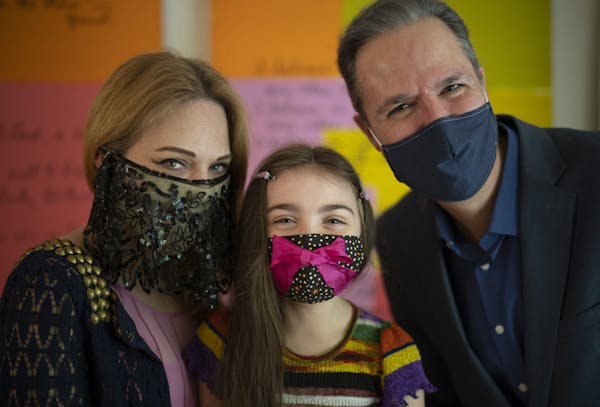Minnesota surpassed 600,000 reported infections with the coronavirus that causes COVID-19 on Thursday, despite continued signs that the latest pandemic wave has peaked and that viral activity is nearing its lowest levels since last summer.
The state reported 505 more infections on Thursday as well as 10 COVID-19 deaths, raising its totals in the pandemic to 600,408 infections and 7,403 deaths overall.
The 70 days it took to add another 100,000 infections in Minnesota reflected a pandemic wave in March and April that state health officials believe was short-circuited by vaccination progress. It took only 16 days in mid-November for Minnesota's infection count to increase from 200,000 to 300,000, before vaccine was available, and then 24 days to reach 400,000 in mid-December.
State infectious disease director Kris Ehresmann stressed that the virus still is circulating and that unvaccinated people should take precautions such as social distancing and mask-wearing even if Minnesota no longer requires them to do so. The scheduled end on Friday of the state's remaining capacity caps and social distancing requirements on businesses means that more people could be in closer contact, which could put unvaccinated people at greater exposure risk, she said.
"While our case numbers have slowed down a bit, we still are seeing transmission," she said.
On the other hand, Ehresmann said that fully vaccinated families could "revel" in one another's company over the Memorial Day weekend, while still being mindful that large groups present exposure risks and that outdoor gatherings are safer than indoor gatherings.
The state's positivity rate of COVID-19 diagnostic testing has fallen to 4.1%, below the caution threshold of 5%. Hospitalizations for COVID-19 in Minnesota also declined from a peak of 699 on April 14 to 334 on Wednesday.
The recent decline in infections with the SARS-CoV-2 coronavirus is occurring despite increasing levels of social activity. Minnesotans over the past month have made longer and more nonessential trips away from home, according to the Unacast Social Distancing Scoreboard, which is based on aggregate mobile device usage data.
Traffic was above historical levels in the metro area Monday through Wednesday this week, the first such three-day stretch in months, according to data from the Minnesota Department of Transportation. At its lowest point, traffic was 67% below normal in the metro area on April 12, 2020, at the start of the pandemic.
State leaders believe vaccination has made a key difference. The state on Thursday reported that nearly 2.9 million Minnesotans have received some COVID-19 vaccine and that more than 2.5 million of them have completed the one- or two-dose series. Nearly 64% of Minnesotans 16 and older have received vaccine — bringing the state closer to its 70% goal by July 1.
More than 89% of senior citizens have received vaccine as well — a vulnerable group that has suffered more than 88% of Minnesota's COVID-19 deaths and seven of the 10 deaths reported on Thursday.
The new fatalities included someone 29 or younger from Redwood County, and someone 34 or younger from Hennepin County. The state has recorded 34 COVID-19 deaths of people 34 or younger.
Minnesota ranks 13th in the nation for its rate of fully vaccinated individuals — which means it has been 14 days since their final doses and the vaccine has had time to become fully effective. However, the number of vaccinations has been declining in recent weeks.
Gov. Tim Walz is expected Thursday afternoon to announce incentives such as free fair and event tickets, or fishing licenses, to 100,000 people who get newly vaccinated between Memorial Day and the end of June. Health officials also encouraged people to receive one-dose Johnson & Johnson vaccine, without an appointment, at a federal vaccination site on the Minnesota State Fairgrounds.
Jeremy Olson • 612-673-7744
8 months in jail for Blaine man who caused 120-mph crash hours after he was caught speeding

Daughter sues St. Paul, two officers in Yia Xiong's killing

